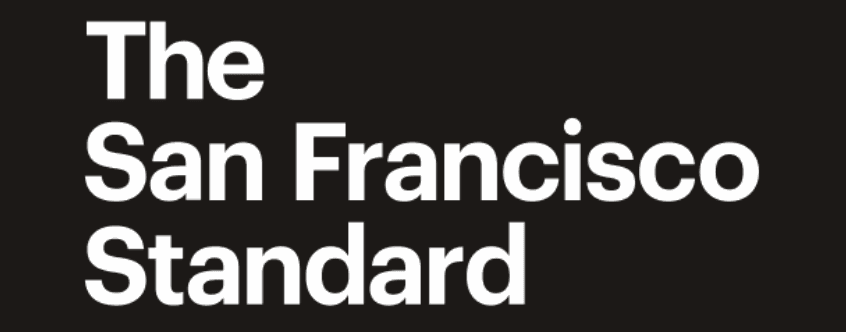Max Blue
December 15, 2021
A few nights ago, I was ambushed by a work of art as I walked to the Muni stop at Duboce and Church, heading home after a day spent visiting galleries downtown. I plan my weeks around exhibitions and openings, research them in advance, and try to cultivate the frame of mind I think necessary to fully appreciate the work. But this kind of preparation sometimes leads to a kind of tunnel vision, keeping me narrowly focused on the work I’ve carved out time to see at the cost of spontaneous discovery. Thankfully, wonder and vulnerability came looking for me as I ambled down Octavia Boulevard between Rose and Market streets.
It was Julio César Morales’s “La Luz Entre Nosotros/The Light Between Us,” 2021, a large neon piece mounted in the window of Gallery Wendi Norris, that stopped me in my tracks. “La Luz” features the titular phrase in large, white letters, the Spanish and English translations each filling one floor-to-ceiling window pane and separated by a third, central pane reflecting the viewer back at themselves. There’s also a soundtrack, accessible via QR code—an original electronic composition by Los Jaichakers (a collaboration between Morales and Eamon Ore-Giron). The nine-minute song offers a structure for engaging with the piece, like a kind of guided meditation.
I have always felt inherently lonely, even—or especially—as long as I have lived in the city. But art, perhaps more than any other singular relationship, has a way of making me feel less alone. I’ve always felt that art was something I found out here with me in the cold, a sign of the existence of others like me, a connection of like-minds across time and space, a beacon of light between us. That’s true of art I see in galleries or museums, but the sensation was especially acute when I stumbled across “La Luz…” This feeling of connectivity can be at least partially attributed to the genesis of the piece: a dream Morales had in which he was slapped when he offered someone a hug. “La Luz…” plays with proximity and connection, within the text itself, as well as in its presentation: a message from Morales to the viewer, behind glass, yet exposed to the public.
When viewing public art, the world around you invades your senses in a way that the gallery or museum walls limit. My experience of this piece was laced with the smell of gasoline; the honking of cars streaming into the city off the Bay Bridge; the solidity of the tree that cradled my shoulder blades as I leaned against it.
It was also affected by the sense of loneliness that I experience living in a modern city—a feeling of isolation that seems to spring from the lack of compassion I often sense between individuals roaming these busy streets. We get caught up in our routines and our fixed ways of thinking, forgetting to open ourselves to the unfamiliar and the unexpected. Art can connect us with others and teach us a way of being in the world that is more receptive.
The sun set; the lights in the windows grew brighter. The music faded in my headphones and the city noises came rushing back in. I walked away, still alone, but now a little warmer.



